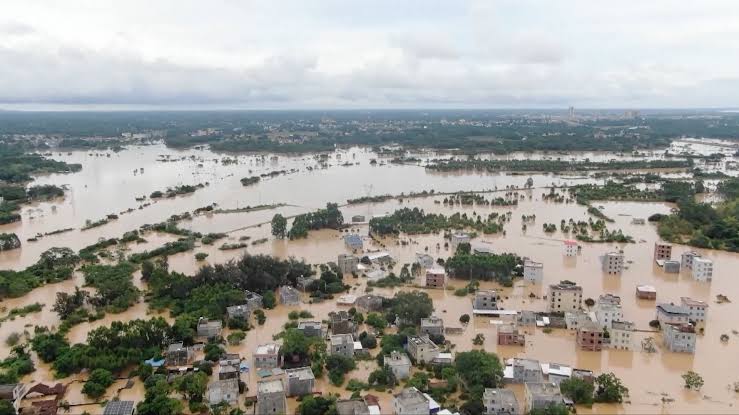Tragedy struck China’s southern Guangdong province early Wednesday morning when a section of highway collapsed following days of torrential rainfall. The collapse, which occurred in the city of Meizhou, resulted in the death of at least 19 individuals and the harrowing rescue of 30 survivors. Shocking images circulating on social media depict a chaotic scene of flames, smoke, and vehicles buried under mud and debris.
This disaster is just the latest in a string of calamities to hit Guangdong amid extreme weather conditions. Last weekend, a tornado tore through Guangzhou, claiming five lives. Record-level rainfall and widespread flooding have plagued the region in recent weeks, prompting the evacuation of entire communities.
The severity of the flooding has been so extreme that authorities evacuated an entire township of 1,700 residents. Beyond the tragic loss of life, the floods have caused significant damage to infrastructure, including power lines and residential homes.
Guangdong, a densely populated province known as China’s “factory floor of the world,” faces unique challenges due to its industrial prominence and high population density. With over 126 million residents, the region is susceptible to the devastating impact of natural disasters exacerbated by climate change.
Asia is no stranger to such challenges, with frequent occurrences of natural disasters like typhoons, earthquakes, and monsoons. Most recently, Japan experienced a deadly mudslide in Atami, Shizuoka Prefecture, which claimed numerous lives and left many others missing.
In this interconnected world, disasters like the Guangdong highway collapse serve as a poignant reminder of the urgent need for robust infrastructure and disaster preparedness. As communities grapple with the aftermath, solidarity and support from neighboring regions and the international community are critical to facilitate recovery and prevent future tragedies.
Natural disasters pose significant challenges across Asia, impacting millions of lives and livelihoods each year. The region’s geographical diversity exposes it to various environmental hazards, from typhoons in the Pacific to earthquakes along the Ring of Fire. In Southeast Asia, seasonal monsoons bring torrential rains and flooding, while countries like Indonesia and the Philippines experience frequent volcanic eruptions.
The frequency and intensity of these disasters are exacerbated by climate change, with rising sea levels contributing to coastal erosion and increased vulnerability to storm surges. Rapid urbanization and population growth further compound the risks, placing additional strain on infrastructure and emergency response capabilities.
Efforts to mitigate these risks require a multi-faceted approach, including investment in early warning systems, disaster-resilient infrastructure, and community preparedness programs. International cooperation and knowledge-sharing are essential to building regional resilience and ensuring swift response and recovery in the face of adversity.
As we confront the challenges posed by natural disasters, let us prioritize sustainability and resilience, recognizing the interconnectedness of our global community and the imperative to protect our planet and its inhabitants from future catastrophes. Together, we can build a more resilient and sustainable future for generations to come.
Let us keep the victims and their families in our thoughts as we reflect on the profound impact of climate-related disasters and work towards building resilience in vulnerable regions around the globe.











